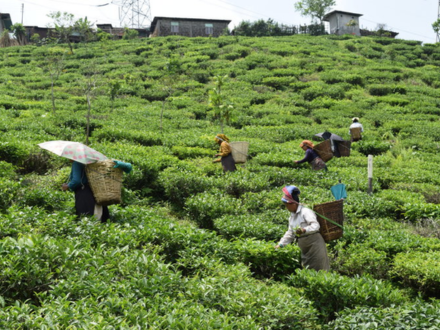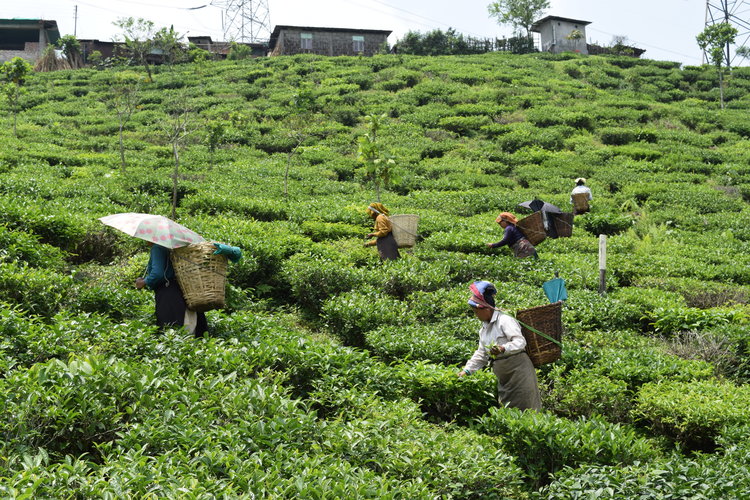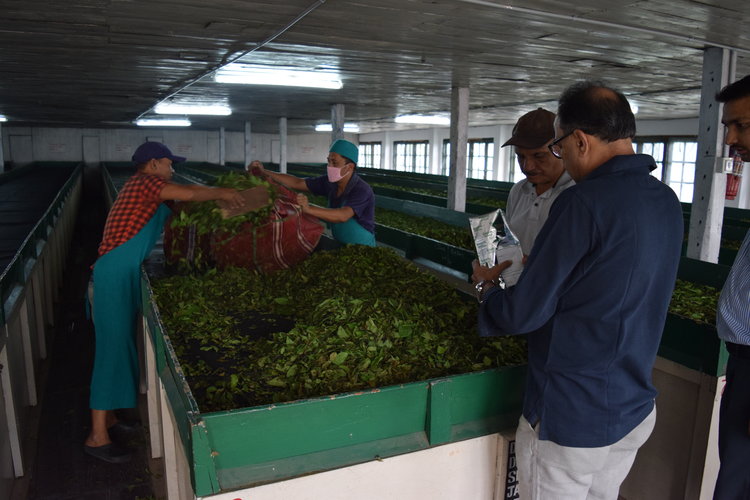

Darjeeling tea was first planted in India during the 1840s. This happened when a British civil surgeon in the East India Company, Archibald Campbell, planted seeds of the camellia sinensis plant in his garden. Actually, this showed that the variety could flourish at higher elevations. In 1847, nurseries began popping and commercial production was underway by the 1850s. Since then, Darjeeling tea has turned into one of the most in-demand and imitated teas in the world. The branding of Darjeeling tea is strictly controlled by the Indian Tea Board under specific legislation passed in 1957 and 1999. This was in response to a growing number of tea producers labeling their teas as ‘Darjeeling’ while using material from nearby tea growing regions.

We sourced this tea from the Phuguri Estate, which is located a few kilometers outside Mirik. Phuguri is known for its Organic offerings and is RFA and HACCP certified. The Estate produces approximately 15,000 kilograms of tea each year. Additionally, it’s situated on a little over 1,000 acres of land. The overall terroir of the Estate is extremely important to the final cup. In fact, the combination of high altitude (approx. 1,600 meters) and excellent climate helps extend the time it takes for the leaves to mature. This extended maturation leads to a more complex cup and more pronounced aromatics.
Teas are often classified by their harvest period, also known as “flush.” Darjeeling is typically sorted into three flushes; first (mid-March), second (April-June), and Autumn (after rainy season). Second flush can be picked as early as April and usually runs through June. This harvest is noted for larger leaves with a lighter tip and a faster growth. The second flush cupping notes are distinct, giving the Darjeeling second flush a pronounced muscatel note that is rarely found elsewhere and is further differentiated from the 1st flush through oxidation levels (1st flush having less oxidation). Darjeeling second flush offerings generally have a darker cup color than their first flush counterparts.

Almost all of the tea grown in India is of the camelia assamica family as opposed to the camelia sinensis plant grown in places like Japan and China. Darjeeling, however, is camelia sinensis. This particular offering is of the AV2 clonal, which was developed on the Ambari Estate. Cloning is a form of propagation that uses cuttings to develop new plants with favorable characteristics. Developing clonals is a very time- and labor-intensive process, but will be critically important in dealing with issues surrounding tea production and climate change in the future. As a final note on the topic, it’s important to note that developing clonals does not imply that this tea is genetically modified. Cloning in this sense is an act of selection, not modification.
We brewed this tea three different ways for analysis; once each by the standard and competition brew methods and once using the gongfu process of multiple steeps.
Our standard brew of this Darjeeling yielded a sweet cup, with strong notes of the characteristic muscatel grape and honey. This candy-like sweetness was set off by a light malty taste that rounded out the cup. The competition brew was more aromatic but kept the signature muscatel grape note. This brew also had a brisk, pine-like note that we found to be very pleasant.

Our gongfu brewing yielded the following results:

The tea used in this analysis is SKU311 and is available for shipment from Royal Tea NY’s warehouse in South Plainfield, NJ.
Looks like you're not logged in! If you have an account, log in here
Don't have an account? Click here to register or close popup window and continue shopping.
